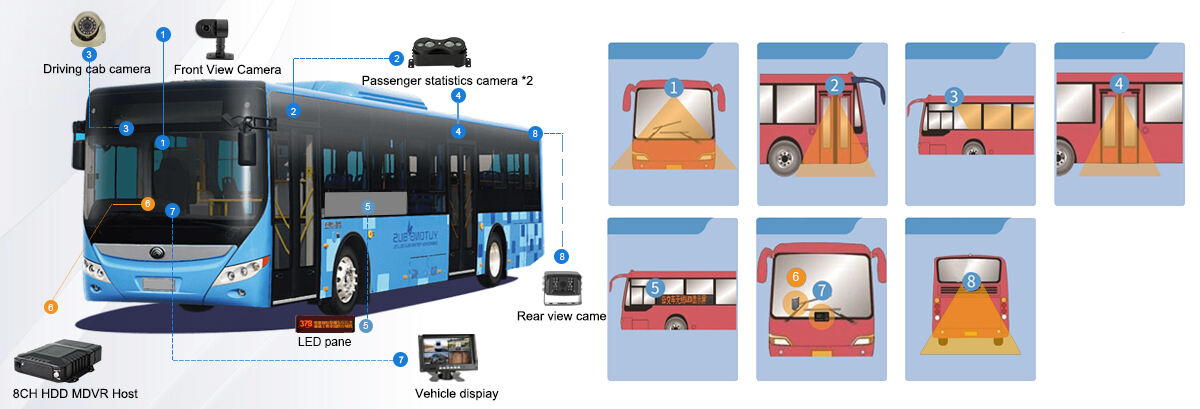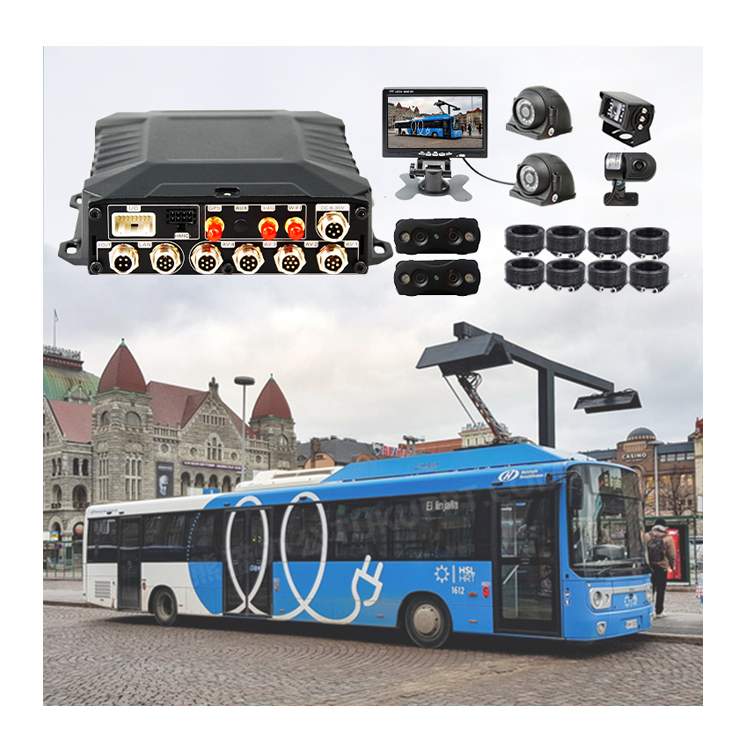Establishing the foundation for smarter fleet operations
Bus companies today must navigate a complex balance of passenger safety, driver accountability, and cost control. The MDVR Management System provides an integrated approach that helps managers see more, know more, and act faster. With video, GPS, data, and reminders all accessible through a cloud platform, oversight becomes precise and efficient. A carefully selected MDVR Management System ensures that operational costs are reduced, compliance is achieved, and incidents are handled with confidence. For fleet managers, making the right purchase decision is essential to protect both passengers and profits.
Compatibility and scalability
Supporting different vehicle sizes and configurations
A bus fleet may consist of minibuses, standard buses, or articulated vehicles. The MDVR Management System should be flexible enough to support multiple vehicle types. Systems with adaptable wiring and camera options allow managers to scale across the entire fleet without purchasing separate solutions. This scalability ensures that every bus, regardless of size, can be equipped consistently.
Integration with existing infrastructure
How well will the MDVR Management System connect with current IT and monitoring tools? Compatibility reduces costs by avoiding the need for complete system replacements. A system that integrates with dispatch software, scheduling platforms, and legacy GPS units ensures smooth transitions. The goal is to build a connected ecosystem without redundant expenses.
Core functionality and performance
Real-time video monitoring and storage
The most basic requirement of an MDVR Management System is reliable video capture. Managers need continuous footage that can be stored, reviewed, and accessed remotely. Real-time streaming through the cloud adds another layer of visibility, allowing managers to respond immediately when incidents occur. Video storage policies should also be considered, ensuring data is available for audits or investigations.
AI features for enhanced safety
When advanced AI functions like ADAS, DMS, BSD, license plate recognition, or facial recognition are included, the MDVR Management System moves beyond recording into active prevention. ADAS warns drivers of potential collisions, BSD reduces blind-spot risks, while DMS helps detect fatigue or distraction. These functions are particularly valuable in buses, where passenger safety is paramount. Managers can use these insights to correct risky behaviors and hold drivers accountable.

Cloud-based management and analytics
Centralized control for fleet managers
An effective MDVR Management System gives managers the ability to access video, location, alerts, and reports from a centralized cloud platform. This reduces the need for manual oversight and allows managers to act quickly no matter where they are. Centralization also makes training and auditing easier, since all data can be collected and reviewed in one place.
Data analysis for cost reduction
The MDVR Management System is not just a security tool but also a source of valuable operational data. Managers can analyze fuel usage, route efficiency, and driver behaviors to uncover inefficiencies. By correcting these issues, fleets save on fuel, maintenance, and insurance costs. Over time, data-driven management creates measurable financial benefits that support fleet growth.
Maintenance and technical considerations
Ensuring reliability through hardware quality
Durability is critical when installing MDVR units in buses that face constant vibration and varied weather conditions. The MDVR Management System should include hardware that can withstand harsh environments without frequent failure. Investing in reliable units reduces downtime and replacement costs, making the system more cost-effective over the long term.
Software updates and manual optimization
Unlike self-learning machines, the MDVR Management System requires manual code optimization and software updates to stay current. Buyers should evaluate whether the vendor provides ongoing technical support, frequent updates, and customization services. These aspects ensure that the system evolves with operational demands while maintaining stability.
Driver accountability and management impact
Monitoring driver behavior for responsibility
DMS cameras and additional monitoring angles allow managers to understand whether accidents are caused by driver negligence. The MDVR Management System captures not only external footage but also driver activity, helping identify behaviors such as distraction or fatigue. With this evidence, managers can implement targeted training, education, or disciplinary measures. Accountability becomes clear, improving both safety and financial outcomes.
Using the system as a management tool
The MDVR Management System is designed to empower managers. Beyond recording incidents, it provides insights to support driver education, criticism, or even penalties for repeated violations. Managers can use evidence-based feedback to shape driver performance, building a safer and more efficient fleet. By aligning technology with management processes, fleets achieve greater control over operations.
Expanding the value for long-term operations
Enhancing insurance and liability management
Insurance costs are one of the biggest burdens for bus fleets. With an MDVR Management System, managers can present clear video evidence in case of accidents, reducing disputes with insurers and speeding up claims. When insurers see that fleets are equipped with strong monitoring tools, they often offer discounts because risks are demonstrably reduced. This direct link between technology and financial savings makes the system a long-term investment.
Supporting passenger confidence and public image
Passengers feel safer when they know their bus is equipped with advanced monitoring and recording systems. An MDVR Management System not only protects them but also reassures families, schools, and corporate clients who rely on transport services. When incidents occur, transparency builds trust. Over time, this strengthens the operator’s public image, helping win more contracts and increasing customer loyalty.
FAQs
What should I prioritize when selecting an MDVR Management System
Look for compatibility with your vehicles, scalability across the fleet, reliable video performance, and cloud-based data access. These factors ensure that the system can be implemented effectively.
How do AI features in the MDVR Management System improve fleet safety
ADAS, BSD, license plate recognition, and facial recognition provide proactive alerts to reduce risks. DMS supports monitoring of driver conditions such as fatigue, allowing managers to intervene before accidents occur.
Why is cloud access important for managing a bus fleet
Cloud platforms allow managers to monitor vehicles, review video, and receive alerts in real time from any location. This makes oversight faster, more convenient, and more efficient.
How does the system help managers hold drivers accountable
Video evidence and behavioral monitoring reveal whether drivers follow rules or engage in risky actions. Managers can then use this information to provide training, apply discipline, or assign responsibility for accidents.


